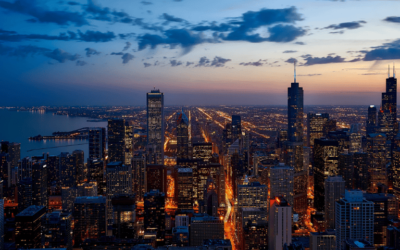Lighting Metrics Definitions
- CRI (Color Rendering Index): the light sources ability to show the true colors of the objects in the room. The higher the CRI the more definition the colors in the room will have. Customers and clients will be able to make out the difference between black and a dark purple or navy-blue color.
- CCT (Correlated Color Temperature): the light’s color temperature. Bright white lights and blue toned can give a space a cold, sterile look. Yellow toned lights will give a space a warmer feel to the room. Blue-toned lights will make the room look cooler toned.
- Lumens: The amount of light a lamp produces
- Wattage: How much power the fixture uses
- LPW: The number of lumens per watt tells you how efficient the lamp is. Higher lumen ratings equal more energy savings. The more lumens a watt produces, the greater your energy savings. You don’t only save on energy bills, you can also qualify for utility rebates.
Did you know we have an entire article on luminous efficacy? We take a deep dive into the “lumen” with infographics for visual comparison. What are you waiting for, learn more about luminous efficacy here!
Lighting Metrics for Retail
Having a good balance of CRI and CCT is important in retail spaces and restaurants. In retail stores, customers want to be able to see the products clearly without any confusion in the color, especially if the products are clothing, furniture, or items to decorate a home. A higher CRI with a more neutral CCT would be perfect for a retail space so the colors are vivid and not obstructed with a yellow or blue tint.
We mentioned color rendering above, but another aspect of color rendering involves R9. What is R9? Color rendering index R9 is one of the 15 pigment colors established by scientists to measure color rendition. It is very important to the eye when viewing the color red. This is a must-read article for the retail industry. Click here to read; What is Color Rendering Index R9?
Lighting Metrics for Restaurants
CCT and CRI affect how the food will look to customers when it is served. The wrong CRI and CCT can make food look unappetizing and a different color than it’s supposed to look in the daylight or when they make their food at home. People typically eat with their eyes so if the colors in their food are different than they are supposed to be then they may not like how it is as much. You want cooler lighting in a casual restaurant where customers don’t usually linger. It helps keep everyone moving along, at a steady pace. Higher-end restaurants want warm lighting. It encourages diners to linger over each course and enjoy the meal.
Many restaurants have different types of lighting in the facility, and we often get ask to help solve color consistency problems. Because no one wants randomly color lighting, if it wasn’t on purpose. So we wrote an article that covers the most common lighting consistency issues and what you can do to overcome them!
Metrics for Office Buildings
Whether you’re the owner or building manager you want employees and tenants to stay. Lighting has a lot to do with how someone feels about a space. You want to avoid low CRI lighting. It negatively affects peoples’ moods and gives the impression of a poorly managed building. It’s more difficult to retain tenants and employees when the lighting has a low CRI index. Lumens are something else to look for. You don’t want bright lights that can cause headaches, but the lights also shouldn’t be dim enough to become a hazard.
Lighting Metrics for Commercial Spaces
Whether it’s a retail, restaurant, or office building you want to pay attention to lighting metrics when you’re retrofitting the fixtures. Choosing the best number of lumens, CRI and CCT will make or break customers’ and employees’ experience with your commercial space and how much you gain from energy savings.
If you are considering an LED retrofit for your facility, let the experts with Action Services Group help. We are standing by to answer your questions, call 610-558-9773 or email [email protected] today!







































0 Comments